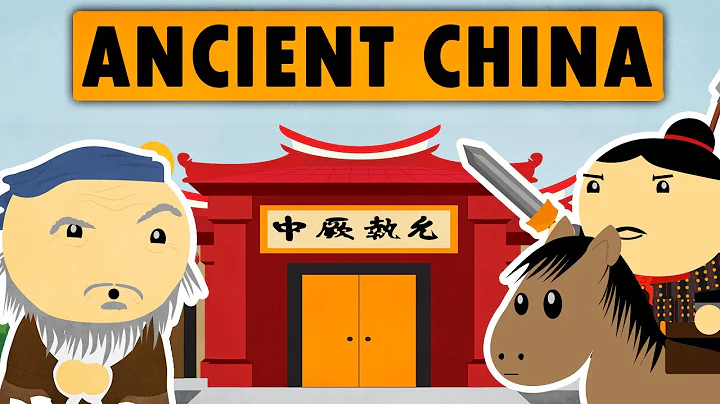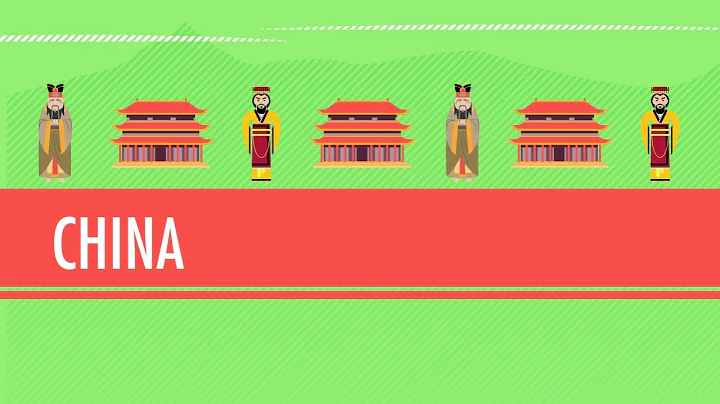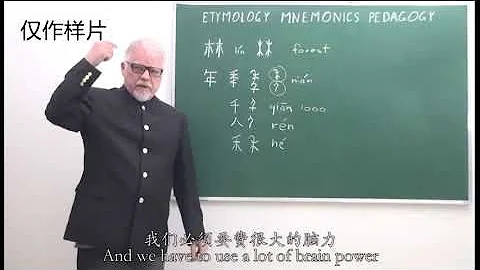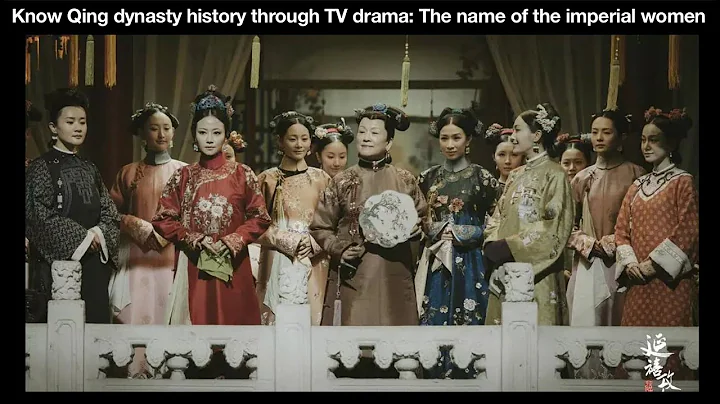During the Three Kingdoms, Jin and Southern and Northern Dynasties, China was in a dark period. The north and south were divided, social turmoil and wars occurred frequently, and the development of the entire society was greatly affected. Under such a social background, the development of jade was also inhibited. In particular, Emperor Wen of Cao Wei ordered to ban the use of jade clothes and to simplify funerals, which caused the decline of jade burials.
From the perspective of major museums, the only jade wares of this period are simple jade wares such as jade pigs and jade cicadas, and they only exist in a limited range. Various jade utensils and jade ornaments are rare, which shows that the jade wares of this period were rare. There is still a lot less processing and manufacturing, and there are very few people who are skilled in craftsmanship. The production of jade was obviously in decline compared with that of the Han Dynasty. The two Jin and Southern and Northern Dynasties were a fault zone for the development of Chinese jade culture. It may be related to the restriction of jade materials. At that time, there were many separatist vassal states in the Western Regions and the Hexi Corridor. The "Silk Road" was blocked, and the mainland could not obtain a large amount of jade materials. The main reason was the frequent wars at that time, which caused great damage to the social economy and seriously affected the development of the jade manufacturing industry.
The types of jade wares of the Three Kingdoms, Two Jins, Southern and Northern Dynasties were changed and appropriately increased on the basis of the shapes of jade wares of the Han Dynasty. Jade Heng became cloud-shaped, jade pendants became trapezoidal, half-moon-shaped, heart-shaped, and additional shapes were added to the shape of the jade wares. Jade to ward off evil spirits, jade hairpins, jade string ornaments, jade belts , jade chess pieces, jade tablets, jade pendants, rings appeared for the first time in jewelry, which should be derived from Western culture. and various jade Buddha statues. Buddha statues were often seen during this period. The royal family generally introduced Jade Buddha , while the people mostly used Quyang white stone and yellow flower stone to make Jade Buddha as offerings. As shown below:

The performance of jade also reflects a kind of social culture. The Three Kingdoms, Two Jins, Southern and Northern Dynasties was the first period of great national integration in Chinese history. It had an unprecedented impact on the thousands of years of Central Plains culture that had been formed at that time. Profound. The Han and Hu cultures absorbed and merged with each other, forming a brand new culture. As shown below:

The jade system is no exception. After the unification of the Sui Dynasty, the traditional jade-using system that remained in the south of the Yangtze River also disappeared with the demise of the Southern Dynasties. The jade articles that were originally popular in the northern region became the main body of the jade articles in the Sui and Tang Dynasties.
The most typical one is the use of jade belts. The square jade belts and oval jade rings found in several cloud tombs of generals in the Northern Zhou Dynasty were used to wear other decorations. This kind of belt is the traditional costume of the northern nomadic people. The belt can be used to fasten sabers, awls and other necessary tools for daily life. It is called a belt. During the Tang Dynasty, the jade belt became a necessary decoration for officials. The quality of jade was used as the standard for grade. There are many jade belts from the Tang Dynasty. It can be seen that the jade wares of the Sui and Tang Dynasties were mainly influenced by the culture of northern ethnic minorities. The decline of traditional jade wares was actually replaced by the jade wares of ethnic minorities that entered the Central Plains. This is the best testimony of the integration of Han and Hu cultures. The jade wares of this period are A living fossil of history.


The war resulted in very few jade artifacts surviving from this period, and also brought disaster to the jade seal that represented the supreme power. It was displaced and changed hands during the war, and became a tool used by others, tarnishing the pure essence of jade.
There is also a story about the jade seal that has been circulating during this period, which is also intriguing.
After Qin Shihuang unified the six kingdoms, he ordered someone to carve a jade seal, which he called the "Emperor's Seal". According to historical records, this jade seal is carved from white jade from Lantian, Shaanxi Province. It is four inches in diameter and has a chi-tiger button, or a dragon-fish phoenix bird button. On the front of the jade seal are engraved the words "Ordered by Heaven, you will live forever", written by Prime Minister Li Si in large seal script, as a token of "the divine power of the emperor, orthodoxy and legality". Since then, emperors of all dynasties have regarded the imperial seal as an important symbol of power. It has not only become a coveted target for careerists, but also an important weapon for the central government to trust the country.
Those who obtain the jade seal can be "ordered by heaven". Once they lose it, they are regarded as "exhausted." Even if they have a lot of troops and have power, they will not dare to order the world for the emperor, otherwise they will be attacked by the people of the world.
The historical evidence is that in October 206 BC, Liu Bang led the peasant army to Xianyang and obtained the imperial seal. After the establishment of the Western Han Dynasty, he used it as the imperial seal of the new dynasty, called "Han Dynasty". "National Seal" or "National Treasure of the Han Dynasty" is treasured in Changle Palace. At the end of the Western Han Dynasty, Wang Mang usurped power and needed a jade seal to prove his legitimacy. At that time, the jade seal was controlled by his aunt, the Queen Mother of Han Xiaoyuan and Wang Zhengjun . In order to show his loyalty to Liu Hanbao, he would rather die than hand over the jade seal. In the end, Wang Zhengjun was forced to throw the jade seal to the ground while crying and cursing. . Since then, the jade seal has lost a corner. Later, Wang Mang ordered people to fill up the missing corners with gold, but the jade seal still left flaws.
Wang Mang's New Dynasty regime soon collapsed, and Wang Mang was executed. The rebel army found the imperial seal from Wang Mang's body and proclaimed Liu Xuan as emperor. Liu Xuan was later defeated in the confrontation with the Red Eyebrow Army , so the Red Eyebrow Army supported the young emperor Liu Penzi with the jade seal. Liu Penzi also encountered failure later. He surrendered to Liu Xiu, who established the Eastern Han regime, and presented the imperial seal of the state. The jade seal returned to the Han Dynasty and was circulated among the emperors of the Eastern Han Dynasty.
At the end of the Eastern Han Dynasty, the world was in chaos. He Jin and Yuan Shao entered the palace to serve as kings. The ten permanent servants and eunuchs took the young emperor of Han and fled in a hurry. After a bloody suppression, 's ten constant servants were killed, and the jade seal disappeared! More than ten years later, eighteen princes attacked Dong Zhuo. Dong Zhuo was defeated and fled westward, setting fire to the Luoyang palace. Sun Jian, who was the first to invade Luoyang, salvaged the body of a palace maid from the Zhen Palace Well in the south of Luoyang City while putting out the fire, with a jade seal hanging from her neck. Sun JianAfter seeing this, Sun Jian was overjoyed and wanted to take the jade seal as his own. Unexpectedly, Sun Jian's subordinates spread the news. The princes headed by Yuan Shao, the leader of the alliance, all wanted to get this jade seal, so they all had their own agendas and staged a scene of jade seal war. Fight...
In "The Romance of the Three Kingdoms", Sun Jian returned to Changsha with the jade seal. On the way, he was intercepted by Yuan Shao and Liu Biao and died of injuries. The jade seal fell into the hands of Yuan Shu. In short, both Yuan Shao and Yuan Shu were defeated by Cao Cao, who held the emperor hostage to order the princes. The imperial seal returned to the hands of Emperor Xian of the Han Dynasty again.
In 220 AD, Cao Pi forced Emperor Xian of the Han Dynasty to surrender to himself and established Cao Wei. The Chuanguo Jade Seal naturally became the symbol of Cao Wei's imperial power. Cao Pi also sent someone to carve the official character "Da Wei receives the Han Chuanguo Seal" on the shoulder of the Chuanguo Jade Seal. After , the Three Kingdoms were unified under the Western Jin Dynasty , and the jade seal also returned to the Western Jin Dynasty. At the end of the Western Jin Dynasty, China's dynasties changed frequently, and the jade seals passed down by the country continued to change hands.
Emperor Huai of the Jin Yongjia five years (311 AD), the jade seal was captured by the Huns tribe former Zhao Liu Cong, and the Western Jin Dynasty was destroyed. In the fourth year of Xianhe in the Eastern Jin Dynasty (AD 329), Later Zhao Shile destroyed the former Zhao and obtained the jade seal. He also followed the same method and added "Destiny Shi Clan" on the right side of the jade seal. However, Zhao General Ran Min killed Shi Jian and established himself soon. , Ran Wei established and , and owned the Yuxi continuation. In troubled times, all careerists need to rectify their names and obey destiny, hoping to prove the legitimacy of their power.
In 352 AD, Xianbei Murong went south to attack Wei. In March, Ran Min was defeated and captured, and in May he was killed. It was a pity that a generation of heroes ended up like this. I think it was Ran Min's "Killing Hu Order" that allowed the blood of the Han people to be preserved. Zhengcheng, the capital of Ran Wei, was besieged by the Northern Xianbei Army. Ran Wei General Jiang Gan and others assisted Prince Ran Zhi to close the city and resist the war. According to the record in "Book of Jin ": "There was hunger in Ye, and people ate each other. In the Jilong period, all the people in the palace were eaten." This shows that there was a famine in Zheng City, which had been besieged for a long time, so that the people ate each other. In the Later Zhao Dynasty, all the palace ladies were eaten by hungry people.
Jiang Gan had no choice but to ask Xianbei to surrender, and at the same time sent someone to ask Xie Shang of the Eastern Jin Dynasty for help. For the Eastern Jin Dynasty, which regarded itself as orthodox in the world, the imperial seal was an important tool to prove its legitimacy. After receiving Jiang Gan's letter asking for help, the Eastern Jin Dynasty sent an envoy to Zhengcheng to bargain, with the purpose of exchanging the jade seal for aid. Jiang Gan was hesitant and unwilling to exchange the imperial seal for his reinforcements.Seeing that Jiang Qian was still hesitant, the envoy personally led more than a hundred elite soldiers to Zhengcheng to garrison a few days later to further persuade Jiang Qian: "The emperor heard that the jade seal has been in my hands, and then I believe that Jiang Qian you are sincerely asking for help. Send troops and supplies to rescue." Jiang Gan believed the envoy's words and handed the jade seal to him. As soon as the envoy obtained the jade seal, he secretly escorted it to Jiankang, the capital of the Eastern Jin Dynasty, and dedicated it to Emperor Mu of Jin Dynasty. The imperial seal once again became the token of the Jin Dynasty's order to command the world.
Two months later, Zhengcheng was conquered by the Xianbei people, and Ran Wei was destroyed. However, the Xianbei people could no longer obtain the imperial seal, so they falsely claimed that they had obtained the imperial seal and ascended the throne as emperor. Murong Jun wanted to convince the world that the jade seal was in his hands and he changed it to "Yuan Xi".
At this time, everyone wants to be king, but there is only one Yuxi. So powerful and powerful figures from all walks of life carved jade seals privately to show their legitimacy. For example, after the Eastern Jin Dynasty fled south, they carved their own jade seals. In addition, there are jade seals engraved by Murong Yong of Xiyan , and jade seals of Yao Qin... Their behavior of privately carving jade seals has caused many heroes in later generations to imitate them.
The real jade seal remains in Jiankang, and has been passed down from generation to generation in the Eastern Jin, Southern Song, Southern Qi, and Southern Liang. Until the rebellion of Hou Jing, Hou Jing was quickly killed and the rebellion was put down. However, the jade seal was taken by Zhao Sixian, the minister and prefect of Pingyuan appointed by Hou Jing, and fled to Guangling, where he was then snatched away by Guo Yuanjian.
Guo Yuanjian dedicated the jade seal to Xin Shu of the Northern Qi Dynasty , and Xin Shu was dedicated to the Northern Qi court. It is said that the jade seal of the country was owned by the Gao family who ruled the middle and lower reaches of the Yellow River. Later, Nanchen replaced Nanliang and also engraved jade seals privately, so more and more jade seals were engraved...
In the first month of AD 577, the sixth year of Jiande, Northern Zhou Emperor Wu Yuwen Yong destroyed the Northern Qi Dynasty, and the jade seals passed down to the country fell into the Northern Zhou Dynasty. Four years later, his relative Yang Jian deposed Emperor Jing of the Northern Zhou Dynasty and established the Sui Dynasty. The Chuanguo Jade Seal became the national treasure of the Sui Dynasty and was renamed the "Shou Ming Seal", the so-called Sui Mandate of Heaven. The Sui Dynasty quickly unified the country after destroying the Chen Dynasty, and confiscated all the privately carved jade seals.
The Sui and Tang Dynasties were the heyday of China. The imperial seal has always been in the hands of the royal family and is regarded as a national treasure. After Zhu Wen usurped the throne at the end of the Tang Dynasty, history entered the turbulent Five Dynasties and Ten Kingdoms period. Yuxi once again encountered troubled times and bad luck. The Houliang Master Yuxi established by Zhu Wen was replaced by and Houtang within a few years.
On January 11, 937 AD, Shi Jingtang, the governor of Hedong in the Later Tang Dynasty, led the Khitan army to attack Luoyang. Emperor Li Congke of the late Tang Dynasty climbed to the Xuanwu Tower and set himself on fire holding the imperial seal in his arms. Yu Xi’s whereabouts are unknown since then.
The legend of jade is a witness to that period of history. The spread of a jade article has witnessed too many heart-wrenching stories. The stories include the flames of war, the tenderness of iron blood, and the changes of dynasties...





















